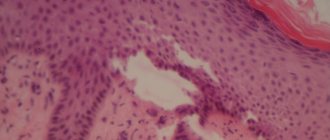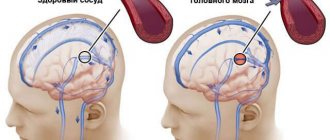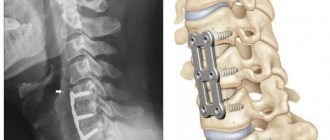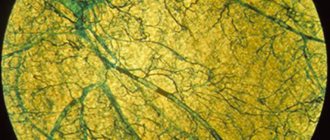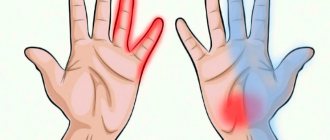Our clinic is unique for Russia, as we use revolutionary methods of restoring blood flow, including microsurgical, endovascular and plastic surgeries. We manage to save more than 95% of limbs in patients with critical ischemia.
Critical leg ischemia is an emergency condition that requires immediate measures to improve blood supply. If the blood supply is not improved, then amputation of the limb is the only method that can save the patient from suffering and death. The danger of critical ischemia is that blood, through clogged vessels, very poorly fills the lower parts of the legs and causes their gradual death. Insufficient blood circulation does not allow the necessary medications to be delivered to the tissues of the foot and toes, which reduces the possibilities of therapy.
Anesthesia
An exhausted person needs a break from suffering. Without such rest it is impossible to continue treatment. The body simply cannot withstand any active methods. Long-term epidural anesthesia relieves pain best. A thin catheter is installed in the back, into which a painkiller is injected as needed. Anesthesia allows you to lay the patient horizontally and somewhat eliminate the swelling of the limb, and conduct the necessary studies.
Narcotic analgesics (tramadol, promedol, morphine) do not have a sufficient analgesic effect, but they allow you to dull the sensations and fall asleep. The downside is the development of tolerance and drug dependence. In some surgical departments, the use of drugs and their subsequent withdrawal can persuade the patient to amputate. Non-narcotic analgesics and sleeping pills have a very weak effect on pain, do not counteract the development of depression, and contribute to the development of acute psychosis after restoration of blood flow.
Neurostimulation is an effect on the sensitive bundles of the spinal cord using a special electrical device. Good and long-term pain relief without the administration of drugs. Allows pain relief for patients who refuse surgery. The downside is that gangrene continues, and the price for the device is about $30,000.
Stages of development and clinical picture
- Against the background of inflammatory and diabetic lesions of blood vessels, a gradual narrowing of their lumens occurs and subsequent blockage by blood clots or atherosclerotic plaques. In this regard, the nutrition of the lower extremities is significantly impaired.
- First, the body tries to compensate for the deficiency of nutrients and oxygen by activating the work of smaller bypass vessels. It is this process that entails the development of the first alarming symptoms - acute pain in the legs and intermittent claudication when covering a distance of no more than 30-35 m.
- Next, stagnant edematous phenomena occur, which further disrupt blood and lymph flow, squeezing the arteries. The nerve endings become inflamed, aggravating the already severe pain syndrome. Now it is characteristic of the patient and in a state of complete rest, even sleep.
- With the inevitable failure of compensation, the peak of critical ischemia occurs. If emergency medical intervention does not occur at this moment, tissue necrosis (death) begins. A gangrenous limb should be amputated, otherwise death is inevitable.
Symptoms of ischemia of the lower extremities are quite specific:
· Acute pain in the muscle tissue of the leg at rest;
· Intermittent claudication (forced stoppage of movement due to severe pain in the calf muscles);
· Deficiency of blood supply to the legs, accompanied by numbness, cooling and tingling;
· Formation of trophic ulcers, mainly in the area of the feet and toes;
· Presence of necrotic (dead) tissues;
· Blackening or bluish discoloration of the skin at the affected sites;
· Signs of decomposition of the tissues of the fingers or feet;
· Gangrene.
The pain syndrome is so intense that it cannot be relieved with conventional painkillers. During the active progression of the pathology, patients manage to relieve pain by changing body position and lowering their legs. Some patients sleep with their limbs down from the bed. In this case, the outflow of venous blood is disrupted, it accumulates in the tissues and puts more pressure on the vessels, which provokes the accelerated appearance of ulcers and necrosis.
Intermittent claudication is another obvious clinical manifestation of this pathology. It is characterized by acute pain in the calf muscles when walking short distances. An acute attack forces the patient to stop for a break, after which the pain gradually recedes. A similar sign can be noted after traveling a kilometer distance, and this is already a good reason to contact a specialist, since “painless” distances are quickly reduced due to the progression of the disease.
Considering the extremely dangerous consequences of critical ischemia of the lower extremities, if any symptom appears, you should urgently contact an angiologist or phlebologist.
Improving collateral blood flow
- Prostaglandins
Discovering all possible bypass routes to the blood supply. For this purpose, prostaglandin preparations (alprostan, vazaprostan) have proven themselves best. They are used in the form of long-term 3-5 hour intravenous infusions. The use of prostaglandins can sometimes reduce critical ischemia and save the limb. Physiotherapy (magnetic field, laser) serves the same purposes. These patients can be treated with conservative therapy for no longer than two weeks. If there is no effect, then resolve the issue with revascularization.
- Improving blood flow
It is necessary to examine the coagulation and anticoagulation system, blood viscosity, cholesterol, fat and protein content, and other indicators. It is necessary to eliminate the identified violations as much as possible. For this purpose, intravenous infusions of various drugs rheopolyglucin, dextrans, and trental are used. Increasing the oxygen content in the blood Hyperbaric oxygenation (a chamber with increased oxygen pressure) is used. The principle is simple - as pressure increases, the solubility of oxygen in the blood increases; more oxygen in the blood means more is released into the tissue. Infusions of perftoran, artificial blood that stimulates the release of oxygen into tissues, can be used.
- Stimulation of new vessel growth – Neovasculgen
To date, genetic drugs aimed at stimulating vascular growth have proven ineffective. Neovasculgen, the most advertised and expensive drug, was tested in our clinic, but we did not observe any effect in patients with critical ischemia. The basis of the treatment of chronic ischemia is to improve blood circulation in the lower leg and foot. The hope for drug treatment, including the use of prostaglandins (vasaprostan, ilomedil, alprostan), did not materialize, since the drugs do not reach the tissues due to serious damage to small vessels. Another therapeutic method that was of interest to surgeons and their patients was the Neovasculgen gene therapy complex. The drug is a virus-like particle that carries a gene that enhances the growth of small blood vessels. We used this drug in our clinic in patients with complex vascular pathology, but did not notice a noticeable effect. These patients required vascular surgery, and some even required amputation.
Causes and risk factors
The main causes of critical ischemia of the lower extremities are:
- Obliterating atherosclerosis - vascular lumens are blocked by cholesterol (atherosclerotic) plaques;
- Thrombosis - an artery is blocked by a blood clot (thrombus) at the site of its initial formation or subsequent movement (embolism);
- Endarteritis – the inflammatory process persists, provoking vasospasm;
- Thrombangiitis, or Buerger's disease - inflammation occurs that affects arteries and veins of small and large caliber;
- Diabetic angiopathy (vascular damage caused by decompensated diabetes mellitus);
- Mechanical injuries of large arteries.
Acute ischemia of the lower extremities
Acute ischemia usually develops as a result of thrombosis of the arteries supplying blood to the leg. The most common cause is the formation of blood clots in the cavities of the heart due to arrhythmia. A blood clot can break off and travel through the bloodstream into an artery, thereby disrupting the blood supply to the leg. Arterial thrombosis can also be caused by alcohol abuse, thrombophilia, atherosclerosis, and so on.
Symptoms
The patient feels pain, numbness, coldness, movements are impaired, the patient cannot move his leg, the leg becomes “not normal.” Symptoms occur abruptly and progress very quickly. If timely medical care is not provided, gangrene develops.
Treatment
In case of acute ischemia, emergency surgery is required - thrombectomy. A special device, a thrombus extractor, removes the blood clot from the artery and restores blood supply to the leg. The ideal time to perform the operation is less than 6 hours from the onset of the disease. If you have the above complaints, immediately call an ambulance.
Basic examinations in patients with chronic cerebral ischemia:
- MRI of the brain, preferably with angiography
- blood pressure and ECG monitoring.
- general blood test, general urinalysis, biochemical blood test, coagulogram, blood lipid spectrum.
- fundus examination
- examination by an otoneurologist
- neuropsychological study.
- CDK BCS, TKDG, ECHO-KG
- examination by a psychotherapist to identify anxiety-depressive conditions and cognitive deficits).
Treatment and prevention of chronic cerebral ischemia should be aimed at correcting the current vascular disease. The focus is on antihypertensive therapy, prevention of thrombosis, and lowering blood cholesterol levels. Also an important component of treatment is the correction of concomitant diseases (diabetes mellitus, heart rhythm disturbances, heart failure, obesity), sleep disorders and anxiety-depressive disorders. Vascular therapy, neuroprotection, and improvement of neurometabolism play a significant role. A comprehensive treatment is recommended, including non-drug methods of influence: psychotherapy, exercise therapy, massage, physiotherapeutic treatment.
The First Neurology clinic presents a variety of hardware techniques that help improve cerebral circulation, such as mesodiencephalic modulation (MDM therapy), brain micropolarization, and electrosleep. Using the modern CEFALY neurostimulation technique, the intensity of headaches decreases, memory and concentration improve.
There are three stages of chronic cerebral ischemia:
- Stage 1 (initial) is characterized by a large number of various complaints of headache, irritability, insomnia, a feeling of “heaviness” in the head, decreased memory for immediate events, fatigue, poor coordination of movements, and instability when walking. These changes are not noticeable to others and patients remain adapted to society. A neurological examination reveals minimal symptoms, a clear neurological deficit has not yet formed, and adequate therapy can reduce or eliminate individual manifestations of the disease.
- Stage 2 (subcompensation) the frequency of complaints about loss of memory and performance, instability, and dizziness increases. A leading clinical syndrome is formed, and a neurological deficit becomes obvious. Cognitive, personality, and emotional-volitional disorders worsen. Adaptation to society and professional skills fade, but the possibility of self-care remains.
- Stage 3 (decompensation) Objective neurological disorders come to the fore. The number of complaints decreases due to decreased criticism of one’s condition. On examination, several well-defined neurological syndromes are noticeable. Cognitive impairments at the advanced stage of chronic cerebral ischemia are very often the leading cause of disability, their everyday adaptation suffers, patients are unable to work, require constant outside care, and vascular dementia develops.
In the clinic of chronic cerebral ischemia, several main neurological syndromes are distinguished. These include cephalgic, vestibulo-atactic, psychopathological, paroxysmal syndrome, pyramidal insufficiency, pseudobulbar syndrome.
Cephalgic syndrome is characterized by pain in various parts of the head. Often there is no connection between headaches and hemodynamic disorders. As chronic cerebral ischemia progresses, headache attacks become less frequent.
Vestibulo-atactic syndrome is one of the most common in patients with chronic cerebral ischemia. It includes vertigo, loss of coordination, instability, and noise in the head. These complaints arise from circulatory failure in the vertebrobasilar system, as well as age-related changes in the vestibular apparatus, ischemia of the vestibulocochlear nerve.
Paroxysmal disorders in chronic cerebral ischemia are varied and include episodes of transient global amnesia, syncope, drop attacks, and epileptic seizures. The severity of such conditions increases as ischemia and concomitant diseases progress.
Mental disorders are often present at all stages of chronic cerebral ischemia. At first, they are of the nature of asthenoneurotic, depressive, and anxiety disorders; at stages II-III, they are joined by cognitive impairment, and dementia occurs.
